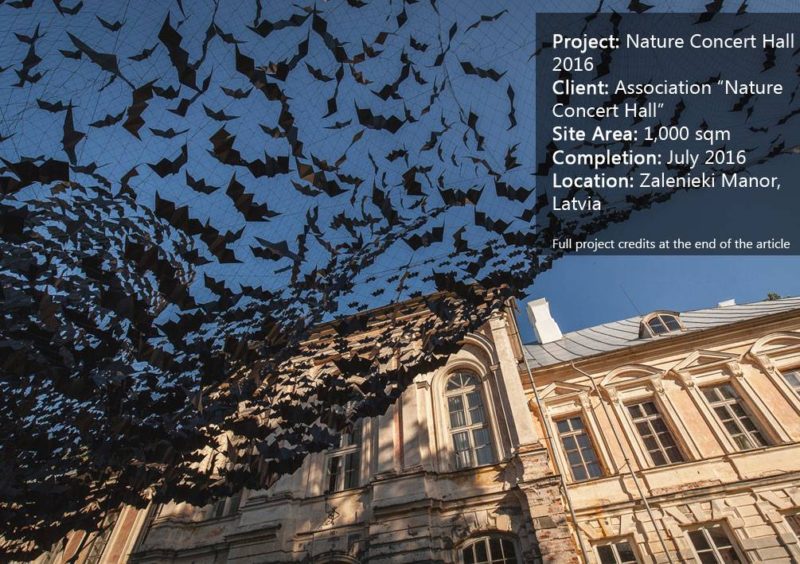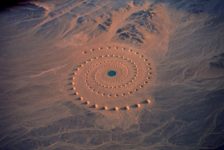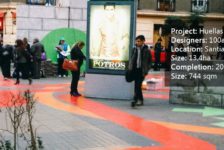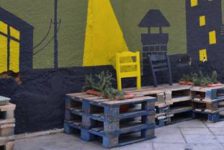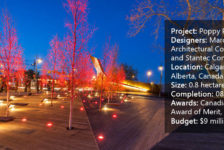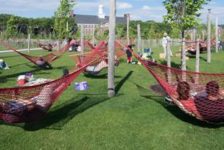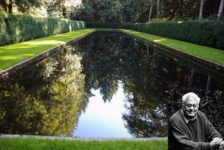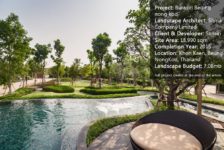Article by Mai Nguyen – Art Installation at the Nature Concert Hall 2016, by DJA (Didzis Jaunzems Architecture), in Zalenieki Manor, Latvia Landscape architecture in general is the comprehensive arrangement of different components to create a better exterior space experience. The scale of landscape design can vary from a regional forest to a simple garden or art installation. With the development of new materials, the design of art installations has achieved tremendous improvement and been gradually recognized worldwide. In general, the art installation, especially in landscape design, is usually aimed at creating an icon, to promote the identity of its surroundings. Just completed in July 2016, the Nature Concert Hall in Latvia by the young and ambitious architects of DJA (Didiz Jaunzems Architecture) is not an exception to this trend.
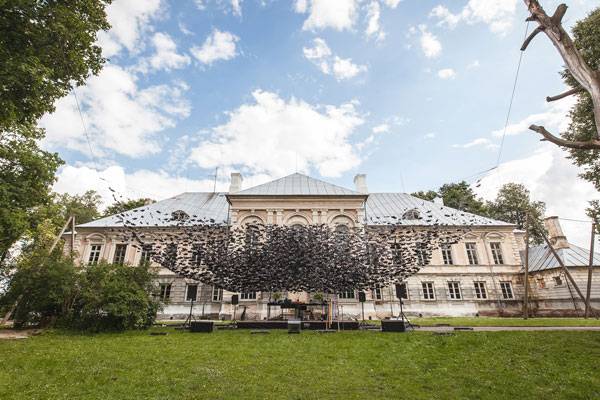
Nature Concert Hall 2016. Photograph Credit: Uldis Lapins
Art Installation Nature Concert Hall
Imitation of Nature
The Nature Concert Hall is made up of 10,000 paper bats comprising a unified component. The main inspiration for the whole installation might be the unpredictable shapes of nature. From the far distance, this piece of art implies an image of a flock of bats converging on the main stage in the middle. Indeed, the original design intent is to generate dynamic geometries, imitating natural features.
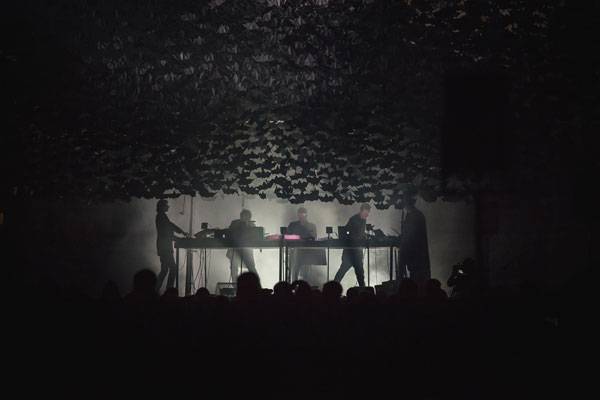
Nature Concert Hall 2016. Photograph Credit: Uldis Lapins
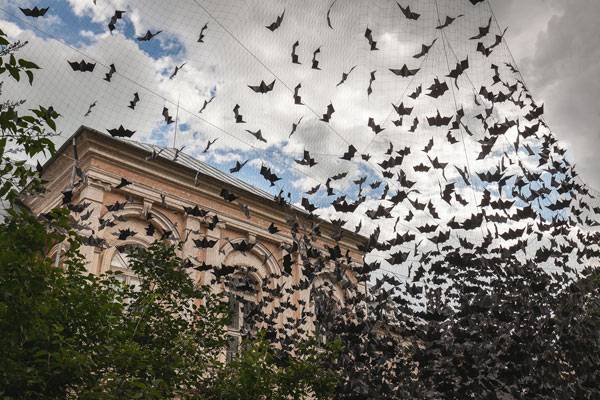
Nature Concert Hall 2016. Photograph Credit: Uldis Lapins
The Scattering of 10,000 Bats
In considering the flock of bats, it is noticeable that its density changes from the edge toward the center, implying an image of flying and levitation; using thin wire and a natural-looking wooden column helps to camouflage most of the artificial elements, attracting more attention to the flock. This flock is intended to serve as a screen for video and light projections. Obviously, the abnormal pattern of this special screen would create an interesting lighting effect for the shows.
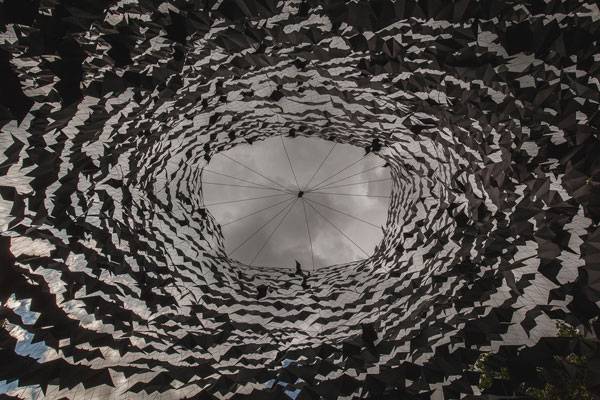
Nature Concert Hall 2016. Photograph Credit: Uldis Lapins
Promoting Local Identity
As mentioned before, one typical purpose of art installation is to promote the identity and iconic nature of the local site. Given that the main character of Luznava and Zalenieki manors, Lativa, is long-eared bat, Plecotus Autirus, the project managed to amplify this icon by introducing thousands of this species at once.
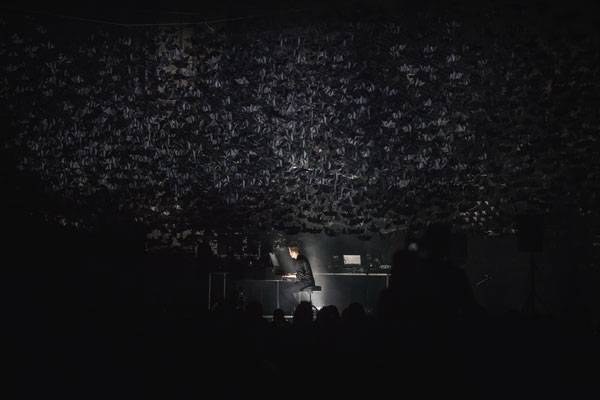
Nature Concert Hall 2016. Photograph Credit: Uldis Lapins
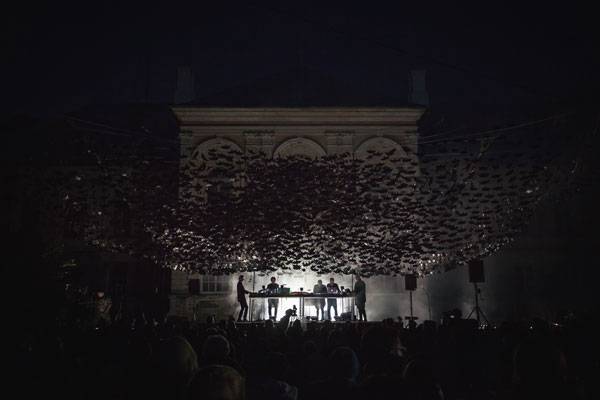
Nature Concert Hall 2016. Photograph Credit: Uldis Lapins
The Dark World of the Bat
The architects note that the effect from light projections and composed music contributes to the interpretation of the dark world of the bat. To outsiders, this idea is bizarre yet stunning; meanwhile, with the local residents, this idea might encourage a familiar yet exciting feeling.
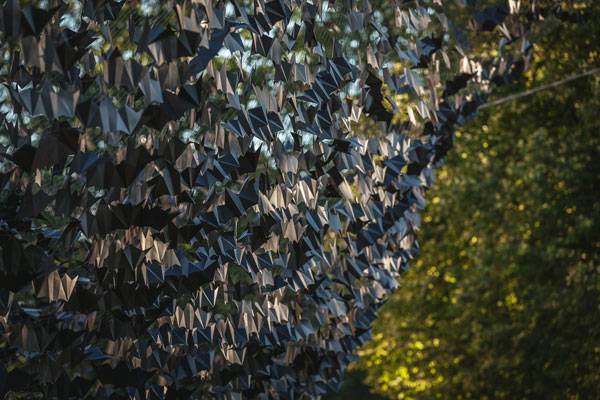
Nature Concert Hall 2016. Photograph Credit: Uldis Lapins
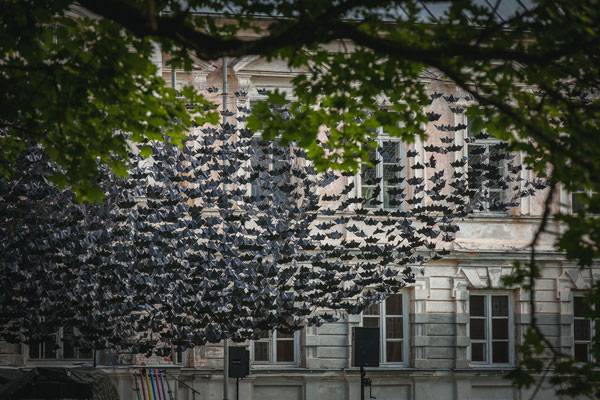
Nature Concert Hall 2016. Photograph Credit: Uldis Lapins
Two-Way Influence of Form and Function
One important role of landscape design is to enhance the external space experience for users. The usual spaces for landscape design are public/community places. Therefore, the role of landscape design in the development of community is undeniable. Similarly, the expectation for an art installation in a landscape design is different from one in an exhibition. In other words, the added value of a functional art installation is generally preferable. In the case of Nature Concert Hall, it is a place for multimedia nature-educational annual events integrating science, dramaturgy, music, and art, which all can be considered as cultural activities. In that sense, it is true to state that this piece of art is placed in an appropriate context. Its iconic character makes it part of the events.
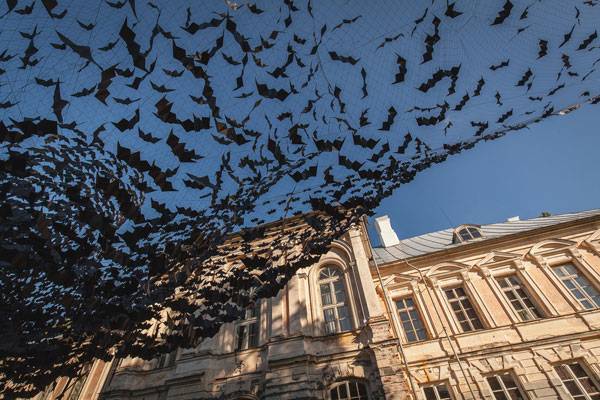
Nature Concert Hall 2016. Photograph Credit: Uldis Lapins
A Simple Yet Elegant Design
In short, the design of Nature Concert Hall by DJA is not arduous with complicated combination. In fact, it is a simple yet elegant design focusing on the essential identity of the site. However, being simple is not the same as being easy. In fact, the project expresses a careful understanding of local context and successfully conveys it into a functional design for community. This character evokes an architectural trend of the 1960s, usually remembered by the statement from Architect Ludwig Mies van der Rohe — “less is more”. With the development of new material and the blooming of contemporary art recently, should this become a new trend of landscape design in the near future?

Nature Concert Hall 2016. Photograph Credit: Uldis Lapins
Full Project Credits For Nature Concert Hall 2016 :
Project Name: Nature Concert Hall 2016 Project Team: Project Author: DJA (Didzis Jaunzems Architecture) Client: Association “Nature Concert Hall” Video Projections: Roberts Rubins, Viktors Keino, Maris Kalve Lights: Oskars Timbars Site Area: 1,000 square meters Completion: July 2016 Location: Zalenieki Manor, Latvia Photograph Credit: Uldis Lapins Recommended Reading:
- Becoming an Urban Planner: A Guide to Careers in Planning and Urban Design by Michael Bayer
- Sustainable Urbanism: Urban Design With Nature by Douglas Farrs
Article by Mai Nguyen
Published in Blog


